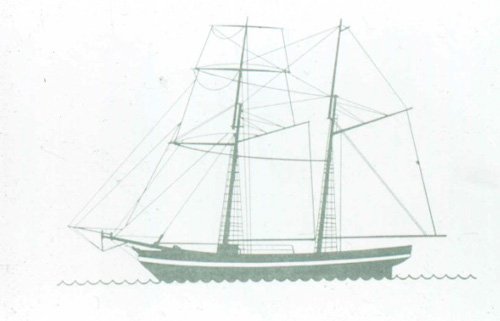Historic shipwreck returned to watery grave

A SHIPWRECK HAS been excavated then reburied in its watery grave, where it will likely remain permanently preserved in the sand – the first time this method has been attempted in Australia.
The prohibitive cost of storing artefacts has led maritime archaeologists to a new approach in shipwreck conservation: excavating and recording a wreck before reburying it where it sank, stabilised under special cloths, tarpaulins and sediments.
“We know that wrecks sitting in cold waters, or covered by clay and larger sediments in anaerobic conditions, will keep on lasting,” says Professor Peter Veth, an archaeologist at the University of Western Australia and chief scientist on the conservation and reburial of the wreck which took place in April and May this year.
Using nature to protect Australia’s shipwrecks
“Wrecks have been found several thousand years old with the timbers in pretty good nick. So the aim is to work with nature to use the natural processes in the right direction,” he told Australian Geographic.
A team of archaeologists and conservators led by Peter worked on a mobile rig to document and then reinter the 170-year-old wreck of the Clarence, in Port Philip Bay, Victoria. The research is an initiative of the Australian Historic Shipwreck Preservation Project, and the first time so called ‘in-situ conservation’ has been attempted in the Southern Hemisphere, Peter says.
The Clarence, a 16m Australian colonial ship – built in 1841 in a shipyard on the Williams River in NSW – ran aground on a sand bank in 1850. It was carrying 132 sheep, which were rescued by Geelong locals, but the ship itself could not be salvaged.
Since it was protected under the Victorian Historic Shipwrecks Act in 1985, expeditions found that the wreck was being badly damaged by fishing activity, making it an ideal candidate for archaeological intervention.

A sketch gives some sense of how the Clarence would have looked during her brief working life. (Credit: Australian Historic Shipwreck Preservation Project)
Archaeological excavation of artefacts
“We decided the best approach would be to excavate the part of the site under the most impact to get a sense of what was left – to look at the timbers to see how intact they were,” Peter says. For the next month the mobile rig became an onsite laboratory station, with a conservation lab, X-ray imaging equipment and diving communications centre.
Divers brought artefacts to the surface for documenting, then returned them to the wreck or a nearby underwater repository.
“If anything was highly vulnerable or unique, then we would put it in full conservation, we wouldn’t rebury it. But that wasn’t necessary for the artefacts we recovered,” Peter says. The divers then stabilised the wreck with backfill and sand bags and laid down shadecloth for protection.
“In November we’ll go back and put PVC tarpaulins over the whole thing, weighted down with contoured concrete – that will stop the anchor damage,” Peter says.
But the project won’t end there, he says: “It’s a proper longitudinal valuation to see if in-situ conservation actually works. We’re going to keep monitoring it every three to six months, then Heritage Victoria and other parties will continue to do that for probably the next 25 years.”
Australia’s 8000 shipwrecks are nation’s history
The project will “benefit effective protection and management not only for shipwreck sites in Australian waters, but in other nations’ waters,” comments Dr Jun Kimura, a maritime archaeologist at Murdoch University in Perth.
“The UNESCO 2001 Convention on the Protection of Underwater Cultural Heritage recommends maritime archaeologists to consider in-situ site preservation as a primary option,” he says.
“There are about 7,900 shipwrecks around the Australian coastline,” Peter says. “The in-situ preservation and reburial program occurring on the Clarence provides a sustainable, cost-effective and strategic intervention to preserving both the structures and their assemblages which are clearly at risk.”
RELATED STORIES




